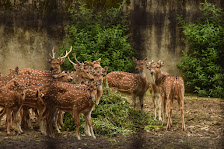How mammals responded to changes in human activity during the pandemic
The COVID-19 pandemic has had a profound impact on human society, but it has also had a significant impact on the natural world. Due to quarantines and travel restrictions, human activity has decreased in many parts of the world. This has led to some unexpected changes in the behavior of mammals.
Examples of the reaction of mammals to changes in human activity
Increased mammal sightings in urban areas: With fewer people around, it was more convenient for mammals to enter urban areas. In some cities, there are reports of deer, coyotes and even bears roaming the streets.
Changes in mammalian behavior: Some mammals have changed their behavior in response to the pandemic. For example, some bats started foraging earlier in the evening, while some dolphins were seen swimming closer to shore.
Increase in indicators: in some mammals, an increase in indicators was even observed. For example, a study in China showed that the population of spotted deer increased by 15% in the year after the pandemic.
Where were these changes observed?
These changes are seen in many parts of the world, including:
North America: In North America, there have been reports of increased sightings of bears, coyotes, and deer in cities.
Europe: There have been reports of increased sightings of wild boars, foxes and wolves in cities in Europe.
Asia: In Asia, there are reports of increased sightings of spotted deer, monkeys and pandas in cities.
What do scientists think about these changes?
Scientists are still trying to understand the full impact of the pandemic on mammals. However, they believe that changes in mammalian behavior are likely caused by a combination of factors, including:
Reduced human activity: With fewer people around, mammals are less afraid of humans. This allowed them to enter areas they had previously avoided.
Changes in food availability: The pandemic also led to changes in food availability for mammals. For example, some mammals found new food sources in urban areas, while others had to adapt to limited food supplies.
Climate change: Climate change is also a factor that can contribute to changes in mammal behavior. For example, some mammals move to new areas in search of lower temperatures.
I hope this article was helpful. Please let me know if you have any other questions.




Comments
Post a Comment